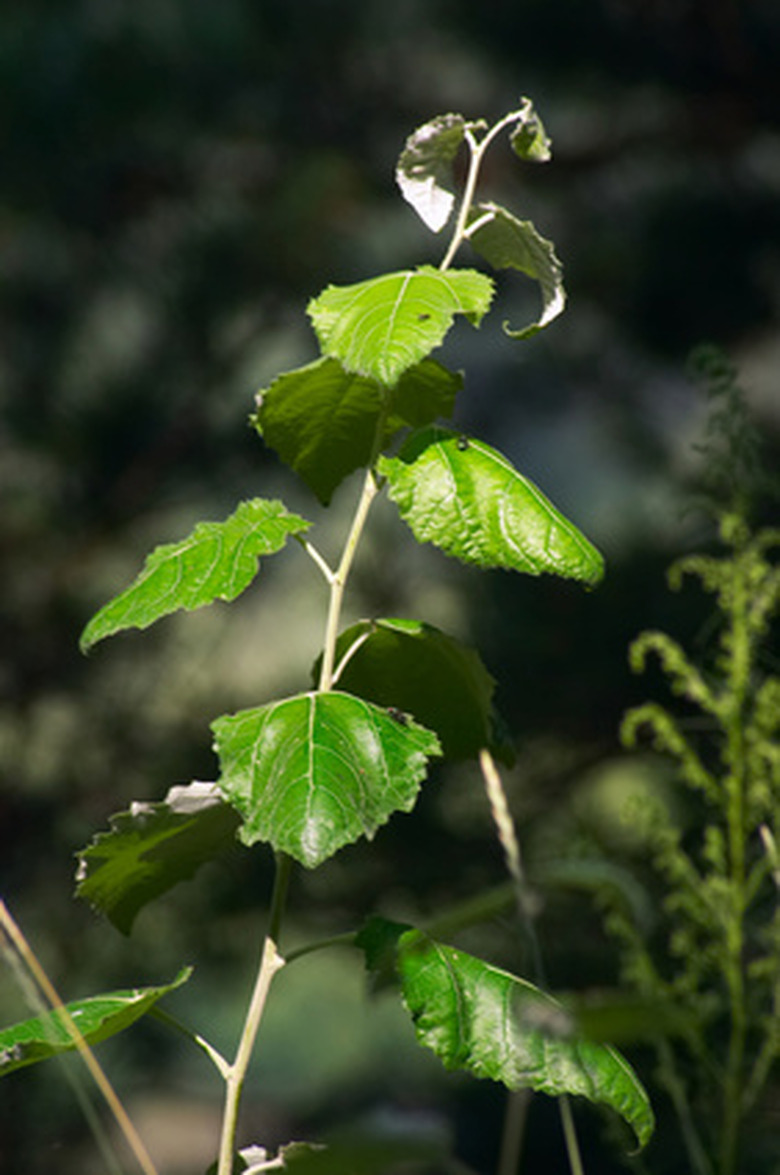How To Compost Cottonwood Leaves
Like most plant material, cottonwood leaves make a suitable addition to any compost pile. However, no matter the amount of cottonwood leaves on your property, the majority of the green material in your compost pile should not consist of cottonwood leaves. These leaves have high amounts of tannins, which can raise the pH of the resulting humus enough to affect the growth of the plants grown in it. To counteract this problem, either add an equal amount of high-pH material to your compost pile or split the leaves up into several different compost piles.
Step 1
Use a shredder, pruning shears or your lawnmower to cut the cottonwood leaves into small pieces. The smaller the pieces in your compost pile, the faster they decompose.
Step 2
At the same time you add the cottonwood leaves, add twice that amount of brown material such as hay, dried leaves or bark. This will help to keep the nitrogen/carbon balance of your compost pile optimal for micro-organic decomposition.
- Like most plant material, cottonwood leaves make a suitable addition to any compost pile.
- At the same time you add the cottonwood leaves, add twice that amount of brown material such as hay, dried leaves or bark.
Step 3
Turn your pile to mix its ingredients thoroughly.
Step 4
Continue to turn and add to your pile as usual until its contents have turned into humus.
Cottonwood
Cottonwoods are fast growing trees that can be planted to give quick shade to a sunny area in the garden. Ample space is necessary: black cottonwood can grow up to 150 feet tall, with a spread of 40 feet, while eastern cottonwood may grow up to 100 feet tall, with a spread of up to 60 feet. Eastern cottonwood may be used as natural erosion control in areas with suitable soil, according to Purdue University. The tree is not particular about soil pH and will even handle salty conditions. Large cottonwoods make imposing garden specimens, providing ornamental value in the fall when their toothed green leaves transition to bright yellow. All species attract birds with their inch-long, brownish orange fruits, which offer an appealing aroma. Female trees produce 3-inch catkins covered in silky, cotton-like tufts that can create a substantial mess. Cottonwood's deep, traveling roots are notorious for clogging sewers, septic tanks and drains, as well lifting sidewalks and driveways.
- Turn your pile to mix its ingredients thoroughly.
- Eastern cottonwood may be used as natural erosion control in areas with suitable soil, according to Purdue University.
Things Needed
- Shredder
- Pruning shears
- Lawnmower
Tip
Your compost pile should be about as moist as a wrung-out sponge. If it feels too dry a day or so after you add the cottonwood leaves, add some moist kitchen waste or a few cups of water (always turn the pile after any additions) a few days at a time until the moisture level is satisfactory.
References
- VegWeb: What to Compost
- University of Delaware: Yard Waste and Composting
- Washington State University: Black Cottonwood (Populus trichocarpa)
- Wood Magazine: Cottonwood
- National Forest Service: Populus Deltoides Bartr
- Purdue University: Populus Deltoides
- North Carolina State University: Populus Deltoides
